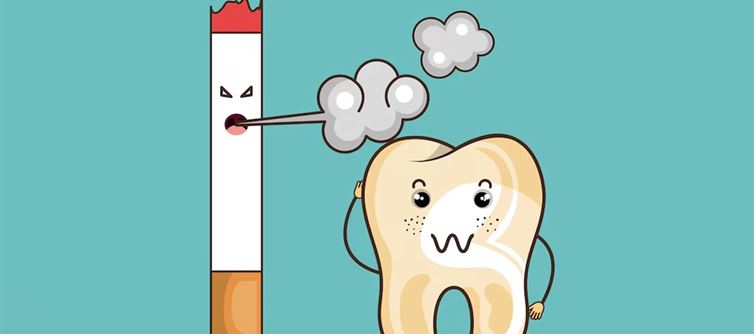
Smoking Stain Causes
The two primary components of a cigarette are nicotine and tar. These two factors each play a part in the yellowing and deterioration of your teeth:
Tar
Indeed, it is the same tar that is used on highways; it is the same tar that gives the roads their black color and unifies them. Imagine smoking that tar several times a day for years. It will undoubtedly discolor your teeth and gradually leave stains on them as it marks its territory.
Nicotine
For many years, nicotine was the same chemical that was employed as an insecticide. That's the reason smoking is so addictive. It is a naturally occurring chemical molecule found in tobacco leaves that has no color or smell. It can stain your teeth with nicotine and lead to other, more severe dental issues when it enters your body through regular cigarette smoking or chewing tobacco products.
How To Remove Smoking Stains From Teeth?
Some useful advice on how to get rid of tooth stains is provided by Dr. Soma Shiwani, a consultant dental surgeon at Tirath ram Shah Hospital in New Delhi:
Quit Smoking
Yes, it is that clear. According to Dr. Soma, there's no need to try to get rid of the stains if you don't stop smoking because they will always come back. According to her, quitting smoking as soon as possible is the greatest method to permanently get rid of them.
Maintain Oral Hygiene
It should be simpler to maintain good dental hygiene once you stop smoking. According to Dr. Soma, brushing for a few minutes twice a day is essential. "Flossing, not eating sugary and sticky food, also goes a long way," she continues.
Baking Soda
Using baking soda and water is an alternative technique for removing stains from teeth. Mix eight ounces of water with one tablespoon of baking soda, then swirl it around in your mouth for about two minutes. Dr. Soma advises, "Spit it out and rinse your mouth with water."
Bleaching
Bleaching is a teeth-whitening technique that your dentist does in the office. "It includes applying a protectant to prevent the gums from coming into contact with the bleaching agent, then applying either hydrogen peroxide solution or some other form of whitening agent on the teeth for approximately 30 minutes," adds Dr. Soma. In a single visit, in-office techniques can lighten surface stains by an astounding six shades.
Depending on your dentist's location, the extent of your discoloration, and other factors, the cost of an in-office teeth-whitening procedure can change. Overall, the cost of the treatment is quite low.
Take-Home Kit
A teeth-whitening kit that you can use at home can be a good option if you're searching for something a little less serious. "You will receive professionally-strengthened whitening gel in custom-fitting trays. "You'll notice a difference in the color of your teeth if you whiten for about 30 minutes every day for two weeks," Dr. Soma says. Although the price of a take-home kit will differ based on the dentist, the process is typically also reasonably priced.
Staining your teeth can be awkward. Additionally, it frequently gives the impression that you don't practice decent oral hygiene, even if you may be doing it consistently, but your smoking overpowers it. Smoking should never be done in the first place, even though the stains may be eliminated or at least decreased with the preceding advice.




 click and follow Indiaherald WhatsApp channel
click and follow Indiaherald WhatsApp channel